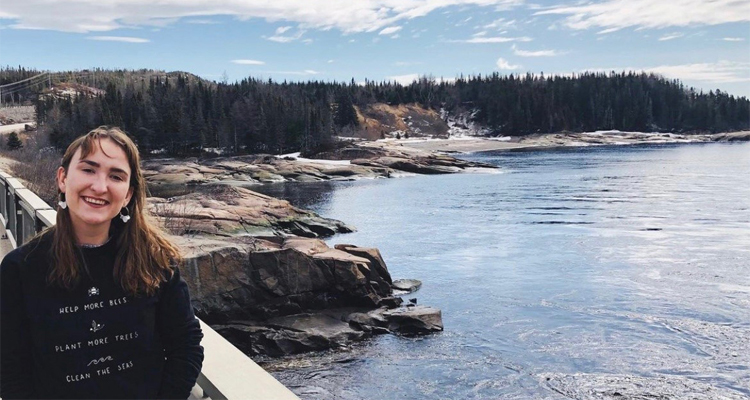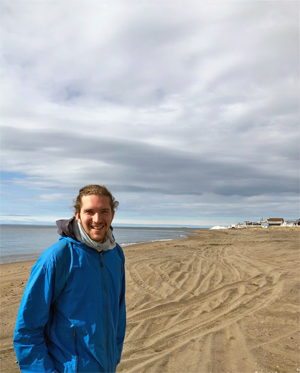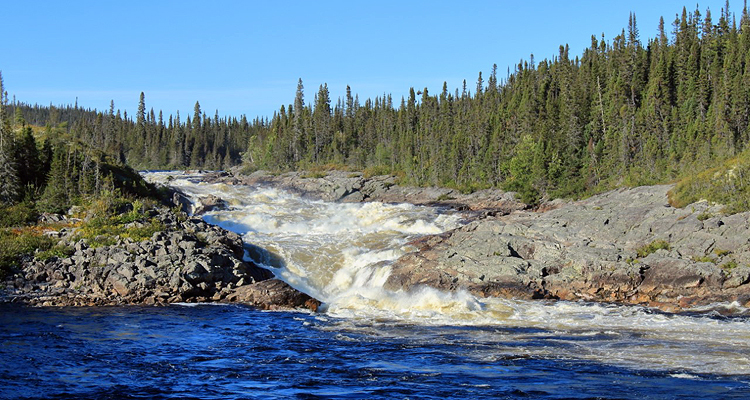
In late February 2021, the Innu Council of Ekuanitshit and the regional municipality of Minganie passed joint resolutions declaring that the Magpie River – Muteshekau-shipu in Innu Coet – was a legal person. The river became the first ecosystem in Canada to be granted legal personhood and rights. Third year BCL/JD students Larissa Parker and Gabriel D’Astous write about their work providing legal research on this case, and why it’s meaningful to the future of environmental and Indigenous law.

For decades, the Ekuanitshit community and local environmental groups have been fighting to protect the nearly 300 km long Muteshekau-shipu (Magpie River), which is deeply important to the people of Ekuanitshit First Nation and located on their ancestral lands, from any further hydroelectric development. Drawing inspiration from the growing international movement of recognizing the rights of rivers, they sought to protect the river in this manner.
Over the past three years, we have provided research, under the supervision of Professor Kirsten Anker, on international case studies where the rights of rivers were recognized, as well as on the Canadian context in aboriginal law and environmental law. To this effect, environmental group SNAP* Québec partnered with the McGill chapter of Pro Bono Students Canada / Réseau national d’étudiant(e)s pro bono in September 2018, in order to have students provide legal research to inform their efforts.
What happened
In late February 2021, the Innu Council of Ekuanitshit and the regional municipality of Minganie passed joint resolutions declaring that the Muteshekau-shipu was a legal person. Under the law, a legal person is a human or non-human entity that has legal rights and is subject to obligations. The resolutions in this context grant the river a number of rights in accordance with Innu customary law, including the right to flow, the right to maintain its natural biodiversity, the right to be safe from pollution, as well as the right to sue, among others. As a legal person, the Muteshekau-shipu has the capacity to defend those rights in court, if they are breached.
The recognition of nonhuman actors as legal persons with subjective rights is not new. As a society, we are accustomed to the idea that corporations have rights and obligations under the law. The application of this concept to nature, however, remains controversial. This is because the question of who or what we recognize as a legal person with specific rights is very much a question of traditions and, of course, of social and economic interests. But legal personhood is a fiction that reflects society’s values and understanding of the world; one that can change to fit evolving values.
Indeed, not all human beings have historically been considered legal persons under the law. Women, children and people with disabilities, for example, are all groups that did not acquire legal status until the 20th century. Extensions of legal personality are often contested, but according to Christopher Stone, who famously wrote Do Trees Have Standing in 1973, these extensions normalize over time.
This recognition also follows a larger trend in environmental movements around the world. Increasingly, different jurisdictions are developing rights of nature regimes. This is evident in countries like Ecuador, Bolivia, New Zealand, India, as well as dozens of municipalities in the United States and Mexico.

Why it’s meaningful
With the adoption of the two declarations in late February, the Magpie river became the first ecosystem in Canada to be granted legal personhood and rights. In so doing, Canada joins a nascent international movement with a few other countries, such as New Zealand and Colombia, where the rights of ecosystems have already been affirmed.
As the world struggles to deal with the challenges of climate change and environmental degradation, our legal systems will likely need to adapt to better protect the environment on which we depend. The recognition of environmental rights may very well be where Canadian environmental law is heading.
This project represents an important example of legal pluralism. As Canada and Canadians seek to implement reconciliation with Indigenous peoples on Turtle Island, declarations of this type are significant because they help to ground the recognition of the River’s rights in Indigenous Law.
Related content
For her doctoral thesis, DCL candidate Sarah-Maude Belleville-Chenard is attempting to determine the role of Indigenous knowledge in the construction of the discourse on the law of nature and its governance. Read more in the winter 2021 Focus Law | Droit magazine.
* SNAP: Société pour la nature et les parcs du Canada
